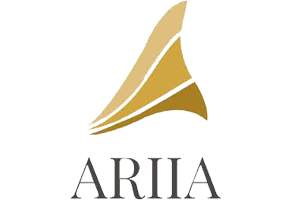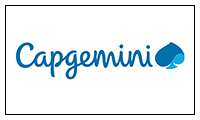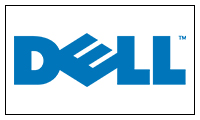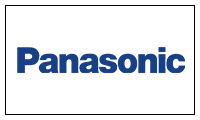- Telecommunication Engineering
- About Us
- Infrastructure / Facilities
Infrastructure/Facilities
Department has well ventilated classrooms and most of them are equipped with multimedia projectors. Department also has its Virtual classrooms, Seminar Hall, and tutorial rooms.
The department has well-equipped laboratories and each lab is equipped with instruments, computers, required software, and hardware. The laboratories have modern equipment to provide good hands-on experience to students in all the areas of their curriculum, such as DSP, Digital Electronics, Microprocessor, Microcontroller, Embedded Controller, Computer Networks, Analog Electronics, and Communication.
Department Library
The departmental library has about 200 books which include prescribed textbooks, reference books, journals, general study materials and student project reports for quick reference for both students and staff.
Laboratories with UPS support
This Lab explores the design, construction, and debugging of analog In this lab students explore the design, construction, and debugging of analog electronic circuits like rectifiers, clipping circuits, clamping circuits, and voltage regulators. They compute various parameters from the characteristics of JFET and MOSFET devices and also investigate the performance characteristics of diodes, transistors, JFETs, and op-amps. They are trained in the construction of a small audio amplifier and preamplifier and the evaluation of BJT amplifiers in CE configuration and test various types of oscillators.
In this laboratory, the students are demonstrated the truth table of various sequential and combinational circuits using logic gates. They are exposed to the design, testing, and evaluation of various combinational circuits such as adders, subtractors, comparators, multiplexers, and demultiplexers and construction of flip-flops, counters, and shift registers and simulation full adder and up/down counters.
In LIC and Communication Lab the students are trained to formulate and gain hands-on experience in building analog systems for a given specification using the basic building blocks such as AM, FM techniques and frequency synthesis. The students can gain knowledge about choosing an IC and design the circuit for a given application. They are taught to analyze the performance of the instrumentation amplifier, LPF, HPF, DAC, and oscillators using linear IC and the applications of Linear IC for addition, integration, and 555 timer operations to generate signals/pulses.
This is a programming lab where students learn the assembly level language programming by understanding the architecture of microcontroller. Students experiment with different interfacing devices and control these devices through microcontroller programming. Students also learn the real-world applications of microcontroller.
This is a programming lab in which students are trained to do HDL programming. HDL programming uses a suitable compiler to execute on Xilinx and FPGA boards to carry out the performance testing of logic circuits, like Flip-Flops, counters, mux, ALU, hardware modules like DC motor, stepper motor and DAC.
In this lab students are trained do coding on mathematical modeling of DSP systems using Scilab and for convolution and Filters design Some of the experiments includes FFT, DFT, Convolution, FIR filters etc.
In this lab students are taught to write assembly level programming using ARM Cortex M3 using Evaluation board and Keil-4 software tool. Students develop ALP using ARM for different real world applications and external interface. Students also develop C language programs and Library functions for embedded system applications.
In this lab students study about microwave test benches, microwave components like isolators, circulators, direction couplers, and TEE(Hplane, E plane, Magic TEE). Students experiment on antennas like Di-electric antenna, Horn antenna, etc. to understand their radiation patterns.
In this lab students are trained on basic methods of Digital communication and analysis of performance and designs of the circuits required for basic Digital communication ASK, FSK, PSK, TDM, Identifying blocks, dataflow in DPSK, QPSK, TDM and classify basic parameters of given Optical Fiber Cable by suitable analysis. Students develop knowledge on the experimental set up to identify the specifications of Ring Resonator, Directional Coupler, and Power Divider, and also investigate the design and working of antennas and wave propagation.
It is a programming and simulation lab, where students are introduced to the Network Simulator (NS2) tool to learn and Practice different networking Protocols. This lab enables students to simulate the operations of basic algorithms and protocols using C Programming.
Major Equipment and Software Tools
-
Microstrip Antenna, Digital CROs, Microwave test bench, Fiber Optics Kits, Function Generators, LCR meter. Data Communication Trainer kits
-
ALS- FPGA-04 SPARTAN-3 & SPARTAN-6, Trainer Kits with Power Supply & interface v module.
-
DSP C6747 Trainer Kit, MELL-8051Micro-controller kits with interfaces, MSP-430 Microcontroller Trainer kit, -8086 Microprocessor Trainer Kit
-
ARM Microcontroller kit with Power Supply & interface module
-
SCILAB, Turbo C, C++, Multi-Sim
-
Network Simulator (NS2).
-
Keil-4.
FACILITIES PROVIDED FOR THE STUDENTS & FACULTIES
TELECONNECT Students’ Association
Well-furnished seminar hall
Well stocked departmental library
Smart classrooms equipped with a lecture video recording system
Wi-Fi connectivity
Hard copies of online journals
Sponsorship for innovative and mini projects
Sponsorship to all research activities including foreign travel for attending workshops or conferences
Study / Sabbatical leave for higher studies / industrial training
Bank and ATM facility on the campus
Bus facilities
Research laboratory




.png)



















